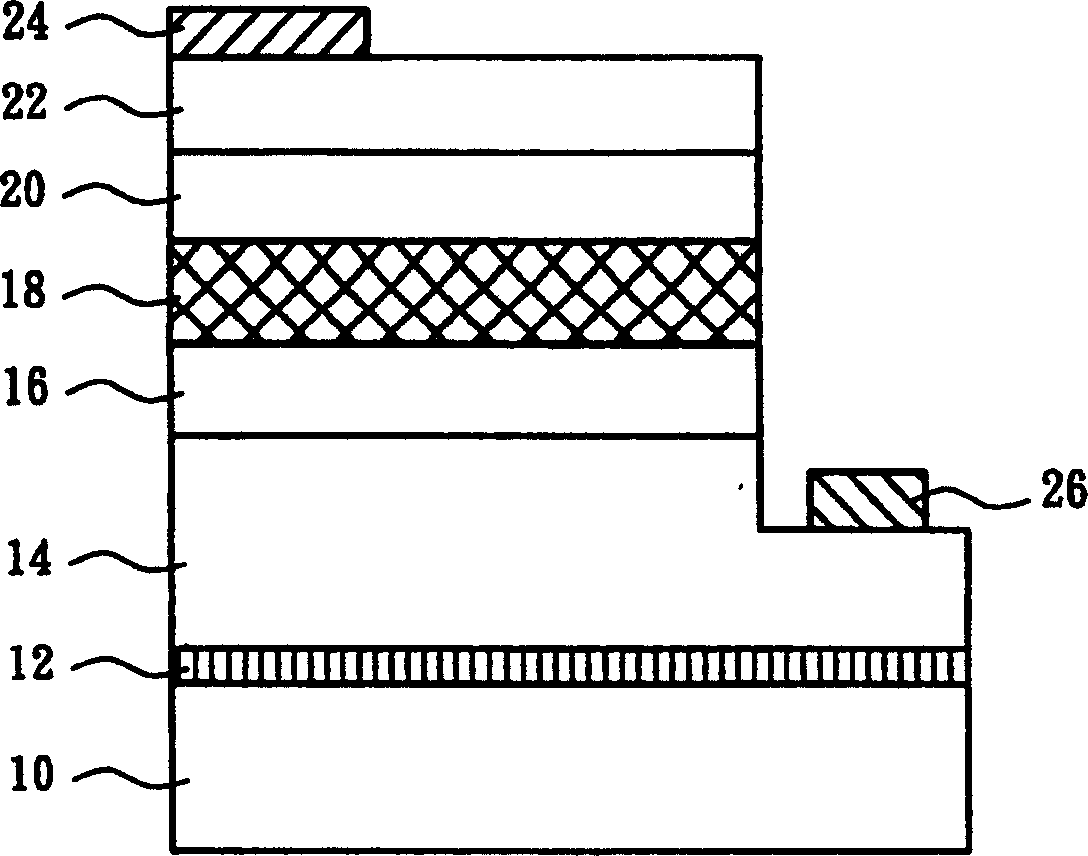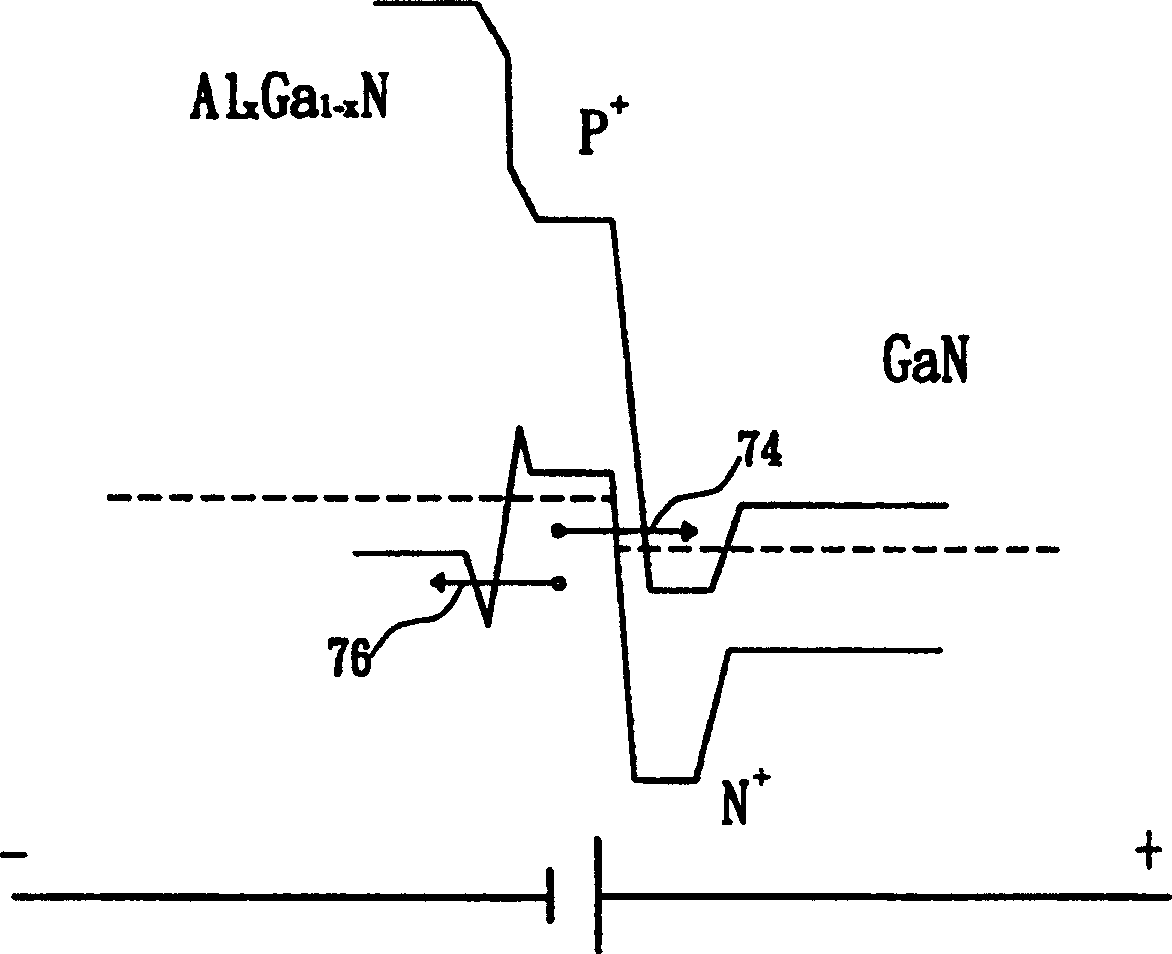LED in III group nitride and its manufacturing method
A technology of light-emitting diodes and manufacturing methods, which is applied in the direction of electrical components, circuits, semiconductor devices, etc., can solve the problems of affecting the light-emitting characteristics of components, reducing the effective carrier concentration of p-type nitrides, and low doping concentration, so as to improve current dispersion ability, reduction of hydrogen passivation, production and quality improvement
- Summary
- Abstract
- Description
- Claims
- Application Information
AI Technical Summary
Problems solved by technology
Method used
Image
Examples
Embodiment Construction
[0015] figure 2 It is a cross-sectional view of the structure of a III-nitride light-emitting diode according to the present invention. Please refer to figure 2 , the present invention uses a method for manufacturing a III-nitride light-emitting diode to simultaneously illustrate the structure of a III-nitride light-emitting diode. First, an epitaxial structure is formed on the substrate 50, and the epitaxial structure may sequentially include: a low-temperature buffer layer 52 (also known as a nucleation layer), an n-type ohmic contact layer 54, a degenerate junction (DegenerateJunction) 72, a wide energy gap p-type confinement layer 60 , active layer 62 , n-type confinement layer 64 with wide energy gap, and n-type ohmic contact layer 66 . Next, the n-type conductive electrode 68 and the conductive electrode 70 are vapor-deposited to complete the fabrication of the III-nitride light-emitting diode of the present invention. Among them, the III-nitride light-emitting diod...
PUM
 Login to View More
Login to View More Abstract
Description
Claims
Application Information
 Login to View More
Login to View More - R&D
- Intellectual Property
- Life Sciences
- Materials
- Tech Scout
- Unparalleled Data Quality
- Higher Quality Content
- 60% Fewer Hallucinations
Browse by: Latest US Patents, China's latest patents, Technical Efficacy Thesaurus, Application Domain, Technology Topic, Popular Technical Reports.
© 2025 PatSnap. All rights reserved.Legal|Privacy policy|Modern Slavery Act Transparency Statement|Sitemap|About US| Contact US: help@patsnap.com



